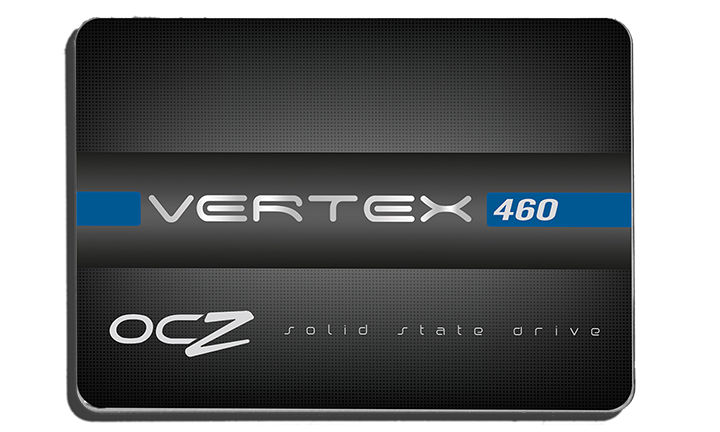REPORT ANALYSIS AND FINAL THOUGHTS
You may have noticed that we compared the new OCZ Vertex 460 SSD to OCZ Vector 150 on several occasions within this report. There is a reason. Given exception to the fact that OCZ has revised the Barefoot 3 to the Barefoot 3 M10, these drives are pretty much a twin of one another; same Toshiba memory, same Micron DRAM cache and same Indilinx Barefoot 3 controller…add the revision. Although we find this a bit odd, it isn’t necessarily such a bad thing. Perhaps OCZ is trying to get away from the Vector and stay with the tried and true Vertex name… Who knows?
One thing is for certain though and that is the fact that both the Vector 150 and the Vertex 460 are probably two of the toughest non-enterprise SSDs we have tested to date. That’s a fact. I mean…there are SSD manufacturers out there that would cringe at the thought of putting their consumer SSD through just under 14 hours of the toughest testing around. Let’s face it…that’s what enterprise SSDs are made for.
There is a very distinct difference between the Vertex 460 and the Vector 150 though, and that is the price. Where we originally found the Vector 150 just walking the line of that $1/GB mark, the Vertex 460 is well below that and that is great news for the consumer. Even at first release, OCZ’ MSRP for the Vertex 460 is right at the .74/GB point and that is a definite benefit to the consumer…and maybe even some small businesses.
All in all, OCZ has put together another great SSD and, coincidentally, our reporting of this falls on the same day the courts have approved Toshiba’s purchase of OCZ SSD assets. We believe the Vertex 460 is very deserving of our Top Value Award, not taking away the fact that it is an upper tier SSD that we still consider to be a workhorse.
 The SSD Review The Worlds Dedicated SSD Education and Review Resource |
The SSD Review The Worlds Dedicated SSD Education and Review Resource | 


Les,
Can you elaborate on that edge connector opposite the SATA one? Doesn’t look like M.2 but is suspiciously close. Testing connector?
Word back from OCZ is that it is a debug connector for their use and is not end user accessible at all.
SSDs have been formatted this way for years already and now these guys want to whine about it. Give me a break, as if you can do something about it.
20GB per day?. Didnt You write about 5TB to the disk during tests? (crystaldiskinfo ). it means You almost used this disk for 8 monts. this is a toy not real SSD disk. medicore ssd need at least 0,5-1 DWPD. Good – professional SSD 5-10 DWPD. this is less than 0,1 DWPD. something is wrong with controller and write amplification, something is wrong with flash memory or OCZ just builds bad SSD
I know I should just ignore it, but it still bugs me when I read things like “we get a look at the drives available capacity after formatting (224GB)”. As if formatting is reducing the size from 240GB to 224GB. When the difference is just between Gigabytes (base 10) and Gibibytes (base 2). Drive manufacturers (not just SSDs) report size in base 10 while Windows reports size in base 2.
There is no as if. The capacity after formatting is just that. We are not responsible for the way you interpret. We keep it simple. Thanks ahead.
I am afraid Billy is correct although there was no need for him to be whiny.
In the article you say that formatting reduces the capacity which is factually incorrect. The difference lies in the way operating systems calculate capacity and the way manufacturers calculate capacity. There have been serveral lawsuits against drive manufacturers because of this oversight on their part:
https://gizmodo.com/183980/western-digital-settles-hard-drive-capacity-lawsuit
https://apcmag.com/Content.aspx?id=1817
Cheers!
Very familiar with your point and quoted articles but couldn’t disagree more. This same argument is always raised by, what I like to call the ‘storage bean counters’ who like to impart their knowledge time and time again about how space is calculated. Unfortunately, most are so tied up in the technical side of the story, that they have trouble with the simplest of statements. Regardless of how you look at it, an advertised 240 GB capacity SSD is reduced when only 224 GB is available to the end user. Different people understand things in different ways and we form our articles to the vast majority who will be reading this article….the typical consumer.
The problem is it’s misleading. I’ve seen customers give disk drives bad ratings because the capacity was “not as advertised”. Actually, it was as advertised. They quoted it in SI units just like every other disk drive manufacturer. It’s the operating system that is incorrect, technically. It should really use the “Gi” prefix. On Linux and Mac OS X, you should see the capacity as 240 GB.
What would be best is if people were aware of the difference.
The average reader isn’t technically sound enough to grasp what you are asking; they simply want to know what is availale to them, at the end of the day.
We would definitely welcome your submission for such an article though.
I have to say, Les has a point. In a way, it’s false advertisement when you consider that every 1TB drive will only ever yield 931GB. And with SSDs, you have further reductions in size, depending on how much it is over-provisioned for longevity’s sake, but the same dissimilar advertising capacity and actual capacity applies.
That said, I think a lot (if not most) consumers have simply come to accept this. I know I have. Add to that the fact that storage is dirt cheap.